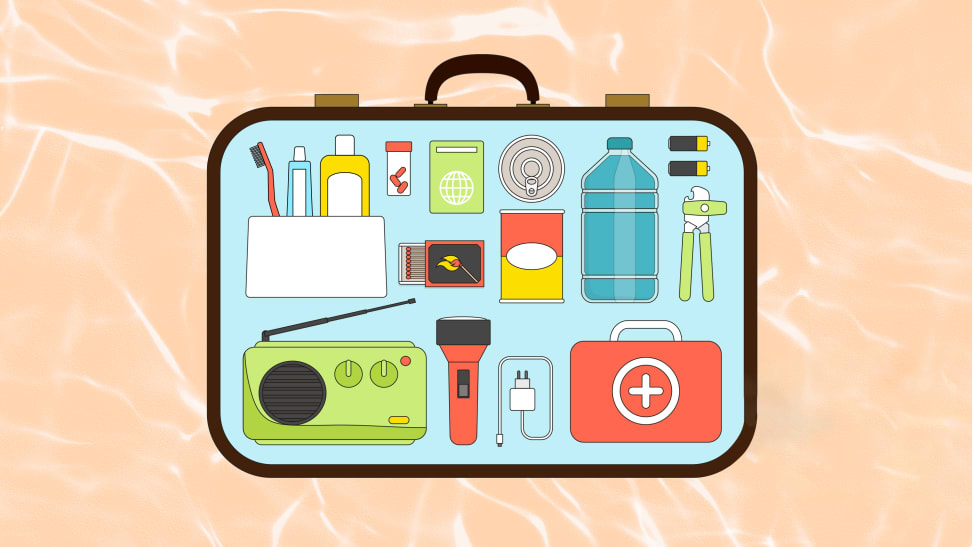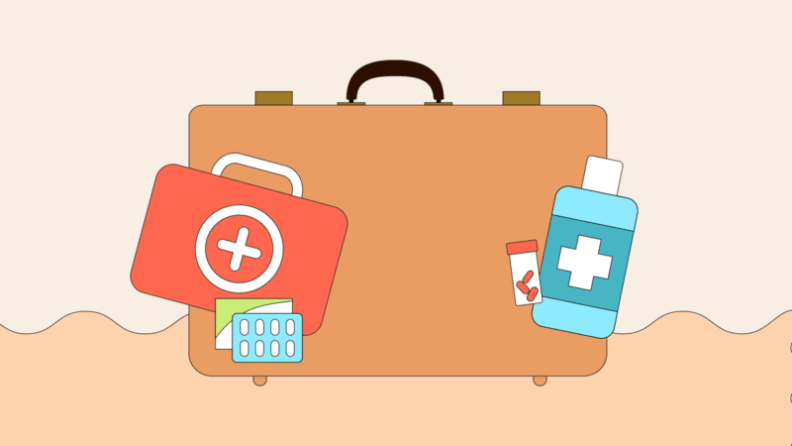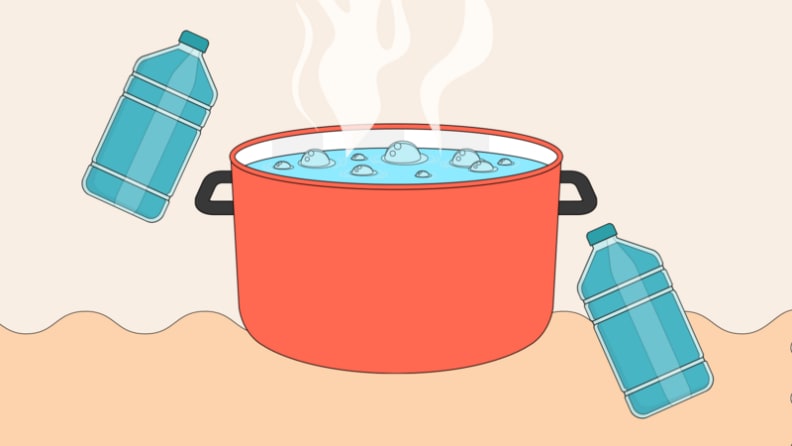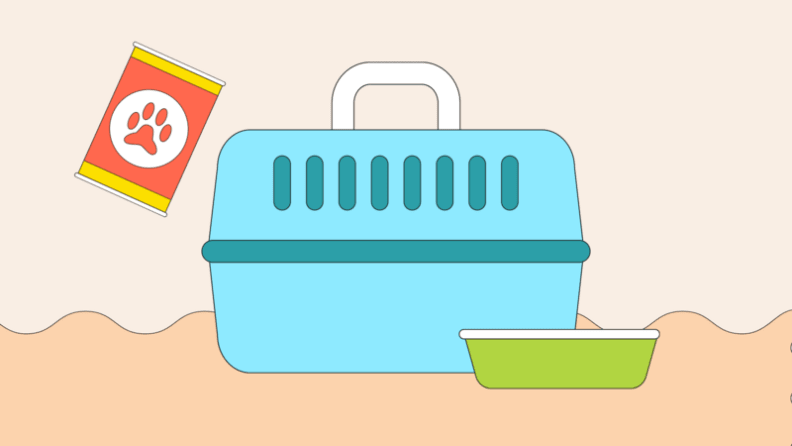9 tips to follow when severe flooding is in the forecast
Don't underestimate the power of water.
 Credit:
Reviewed / Emily Northrop
Credit:
Reviewed / Emily Northrop
Products are chosen independently by our editors. Purchases made through our links may earn us a commission.
Flash floods have swept across Southern California as the area continues to weather a record-breaking storm that began on Sunday. Many areas that were spared from flooding are currently under flood warnings.
In addition to floods, the heavy rainfall that’s buffeted the state has caused dozens of mudslides. The 11.87 inches that fell on Monday have been described as a 1-in-1,000 rainfall event. In all, the flooding and mudslides have left over 143,000 without power and three dead.
It’s important to be prepared for future flooding in the future, which may become more common in the coming years. Preparation will ease your anxiety and give you peace of mind knowing you’ll be more likely to safely weather the storm.
Where is the flooding in California?
Flooding has occurred throughout Central and Southern California including Los Angeles County, Orange County, Riverside County, Ventura County, and Bakersfield.
Why is there flooding in California?
California’s current flooding is due to a heavy rainstorm that began Sunday. This rainstorm is in turn caused by an atmospheric river, which is a narrow band of moisture-heavy air that can travel across long distances.
What is a flash flood?
A flash flood is flooding that happens in a short time frame, specifically being defined as a flood that occurs within six hours of heavy rainfall.
1. Ensure you can evacuate safely
Evacuating during a flood can present many challenges from physical barriers to electrical hazards. Lily Hontz, a former disaster program manager for the American Red Cross, shares the best practices for evacuating safely, including being proactive about doing so.
“Follow instructions from your local news, [because] they get their information from non-profits like the American Red Cross and the local city and county office of emergency management,” she says. “There will be local information about what shelters will open and when the floods may start. Always try to evacuate before flooding starts.”
In advance of a flood, you should have a plan in place. Know all the places you and your family can go, whether that be a shelter, a hotel or a relative's house. Then, map out their routes. Use a physical map (waterproof is ideal) in case you lose internet connection or have power issues, and make multiple possible routes in case certain streets become unavailable.
When evacuating, seek higher ground. Never go through barricades, as they are set up by first responders to direct traffic away from flooded areas. A foot of water can carry away a small SUV, while 18 inches is enough water to carry away even larger vehicles.
Avoid bridges over rushing water, as they may be washed away if the water becomes high enough, and areas of low elevation, as water will more easily collect there. The most common flood-related death occurs when a vehicle drives into floodwaters.
Do not walk or swim through floodwaters, either. Floodwater can contain infectious diseases, sharp glass, chemicals and lethal electrical currents. There is also the risk of being swept away as water may be deeper than it appears or have a deadly current. An important motto to operate under during a flood is "turn around, don't drown."
If your skin encounters floodwater, it’s crucial to wash your body and clothing as soon as possible due to the diseases and chemicals that may be present. Wash your skin with soap and water or alcohol-based wipes; clean your clothes with hot water and detergent.
After evacuating, you should only return home after authorities deem it safe to do so.
“Pay attention to the news to be as prepared as possible,” says Hontz. “Follow weather reports, seek advice from seasoned neighbors and local non-profits that spread the word about preparedness. Reach out to your local city and county offices if you have other questions.”
2. Prepare for a power outage
Floods are prone to cause infrastructural damage, including damage to power lines, transmitters and stations. Unfortunately, the need for electricity doesn't stop, even when it's out, so to keep your phone charged, you'll want to have a portable charger. This will be crucial to have whether you stay or go so that you can communicate with others and monitor the situation as it unfolds.
A radio will be another helpful way to monitor communication if your power goes out. Using a radio will also allow you to dedicate all your phone’s power to making important calls and make the charge last longer. Just make sure you have batteries to keep your radio charged.
Another problem that power outages pose is the lack of visibility—you'll quickly realize how much you rely on lights once you can’t use them. A flashlight will keep you from stumbling through the dark. Not only that, but it can alert others of your presence during a blackout.
3. Pack a suitcase and don’t forget medical supplies

Don't forget to pack essentials like medicine and a first aid kit.
You should make sure you have a suitcase filled with only the most essential belongings to ensure you're comfortable during your stay away from home. A compact suitcase will make transporting your belongings much easier when evacuating.
Try to limit the items you take so that you won't be over-encumbered while moving and so you don't waste time packing.
Make sure to account for all our health needs and the needs of your family members, particularly if you anticipate being away from home for an extended period.
If you take medications, bring them with you. Don’t forget potentially life-saving items, such as EpiPens and inhalers, even if you don’t anticipate having to use them in the next few days. A first aid kit also goes a long way in making sure you're prepared for accidents during an emergency.
Lastly, consider other items that you’ll need to use daily such as hygiene products.
4. Protect important documents
You'll want to mitigate the risk of important documents like insurance papers, medical records, passports, and vaccination cards being damaged by floodwaters during an emergency.
If you’re traveling, zip pockets provide storage that is portable, color-coded, and waterproof. Even if you're staying home, you'll still need to take steps to protect documents in case your home begins to flood.
Paper documents and thumb drives alike can be stored in a zip pocket or secured in a waterproof, airtight safe to protect them from water damage.
5. Stock up on water

Stock up on water in case there's a water advisory in place.
During floods and other emergencies, you'll have to contend with the various types of water advisories. A “boil water advisory," for example, means that water is safe to drink and use for cooking if it's been boiled.
In the event of a “do not drink” advisory, do not use your tap water for drinking, cooking, or any other activity where you might ingest it.
Finally, in the event of a “do not use” advisory, tap water should not be used for any purpose, including bathing.
Water advisories are communicated through town officials and can be monitored via phone or radio. In preparation for water limitations, it’s important to stock up on bottled water ahead of time. The Centers for Disease Control and Prevention (CDC) recommends buying and storing at least one gallon of water per person per day for three days, though a two-week supply is preferable.
LifeStraw straws and pitchers can filter water of bacteria, parasites, dirt, and microplastics by using a thin fiber membrane, ensuring your water is safe to drink. According to LifeStraw, its products even work during a boil water advisory, so, if you can't boil your water for some reason, a LifeStraw is a convenient alternative.
6. Have a supply of food
Another thing to take into account during a flood is your food supply. If a flood takes out your power, you likely won't be able to keep your fridge running at home.
To keep you and your household fed, opt for non-perishable and long-lasting food items. One option is to use canned food, especially if you have a gas stove that remains operable throughout the storm. Non-perishable foods that don’t need to be prepared, such as granola bars, fruit snacks, and crackers, are a convenient option, too.
“Having some camping materials on hand, such as a small portable propane stove to cook the canned food you have, is half of [preparation],” says Hontz. “The canned food is only as good as the materials you have to heat it up with. Some camping stores have some great and affordable small options.”
Be aware that using a camp stove increases your risk of carbon monoxide poisoning. Carbon monoxide is a colorless, odorless gas created by combustion that can be fatal if ingested enough. Because of this, camp stoves should only be used outside. Additionally, they should not be operated unattended or used with heavy pots that could tip the camp stove over.
7. Have a pet carrier ready to go

Like the human inhabitants of your home, you should also have an evacuation plan in place for your pets.
Have a plan for your pets in the event of an emergency, too. This includes creating an evacuation kit just for them. Keep all your pet’s documents, such as their veterinary records, in a waterproof place.
Like the human inhabitants of your home, your pets should also have a two-week supply of food, water, and any medications that they might need. If evacuating, make sure to bring some non-perishable pet food with you.
Another key part of your pet’s evacuation is your method of bringing them along. Carriers facilitate easier transport. If you have a pet that’s too large for a carrier, you can obtain a seat belt that fits into your pet’s harness. Additionally, don’t forget to pack a leash for evacuation and beyond.
While not crucial, bringing along a small pet toy can make their stay away from home less intimidating.
8. Protect your home from floodwaters if you must leave
Whether you’re evacuating or not, you’ll want to mitigate the risk of your home being damaged as much as possible. Time permitting, place sandbags around your home. This can create a barrier around your home to prevent the water from getting close.
Any sandbag will work, including a DIY burlap sandbag filled with dirt. You'll want to stack the sandbags on top of each other, staggering them like bricks. Then, cover them with tarps to prevent water from seeping through.
Bear in mind that it can take many sandbags to create an effective barricade, particularly if floodwaters are expected to be high.
Floodwater can destroy furniture by way of mold and mildew and ruin appliances due to short-circuiting them. While there's little you can do if the floodwaters end up being very high, there's a chance that the water levels could only reach a few inches.
If this is the case, elevating your furniture and appliances can make all the difference when it comes to saving them. They can be raised using things like cinder blocks, which will allow the water to pass harmlessly underneath.
Unplug your appliances if you anticipate flooding in your home. Fewer electrical currents mean that you’ll have to deal with fewer electrical hazards from charged water.
If it’s safe to do so, you should shut off your house’s electrical supply by turning off the circuit breakers. Do not do so while standing in water, because it may already be charged.
Instead, call an electrician to shut off your power if you are able. Lastly, turning off your home’s natural gas supply via the main gas valve will mitigate the risk of fires and explosions.
Your gutters play a key part in whether your home floods. When they aren't properly cleared, water is unable to pass through them effectively and can seep through the foundation of your house, causing damage to your basement and other areas.
To ensure this doesn't happen, thoroughly clean your gutter before the rain comes.
9. Consider investing in flood Insurance
Finally, consider flood insurance. No matter how you prepare your home for a flood, sometimes the floodwaters are just too powerful. Flood insurance is vital if a flood causes destruction, as it covers damage to your home and belongings. Standard home insurance policies typically do not.
As far as cost goes, there are several factors at play, but generally, flood insurance from the National Flood Insurance Program (NFIP) costs around $700 per year. A private insurance policy can cost upwards of $2,000 per year.
If you're thinking about getting flood insurance, you should purchase it sooner rather than later, as it takes some time for the policy to activate. When purchasing from NFIP, you'll need to wait 30 days before it comes into effect. Purchasing from another source could mean a waiting period of up to 10 to 14 days.


